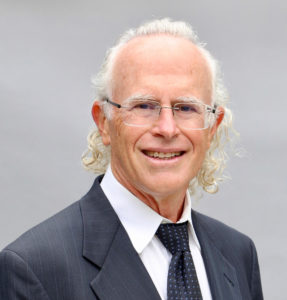Culture change: Its lapses, anomalies—and achievements
Culture change” was not born, nor was it founded. Rather, it emerged out of the experiences of long-term care (LTC) devotees and enthusiasts. Their ideas and ideals, filtered through a common perspective, found a thematic unity under the culture change canopy.
In its barest formulation, “culture change” is a call to nursing facilities to abandon the traditional efficiency model of institutional caregiving and adopt a culture of quality, the practice of “person-centered care,” that affirms the dignity of residents and staff, respects their individuality, maximizes their choice, and empowers them.
The term “culture change” sounds appropriately sophisticated, high-minded, and ambitious. That image and its message quickly radiated throughout the LTC rank and file and attracted followers of many stripes and varied agendas. Soon, LTC added the term to its lexicon.
From the start, no one claimed parentage, no charismatic leader gave the rallying cry, no official canon defined its orthodoxy, no organization claimed jurisdiction over it. It had a compelling vision, but it had no institutional anchor; its varied ideas were summed up in a set of principles, but the door remained open for new arrivals.
This social and theoretical tolerance, predictably, encouraged an undergrowth of incongruities, inconsistencies, and anomalies. Today, culture change is an open, catchall term, sometimes liberally applied to careless definitions, unmarinated concepts, and unfinished agendas. Consider these obvious anomalies:
The Power and Politics of Words
“Culture change” is not a neutral term—it takes a stand. It bids us to do what we accuse state surveyors of making us do; it makes us focus on the process, not on the goal. Notice that many a successful movement is known by a name that proclaims its mission and goal—labels such as “pro-choice,” “civil rights,” and “solidarity” identify their goals clearly. The label “culture change” does not.
“Culture change” is like the reformist preacher's call that asks you to take the righteous path. How do you greet the preacher at your door eager to sell you the culture change message when you have successfully implemented it already? What if you reached that goal via roads less traveled that don't show on the preacher's MapQuest directions? Is Culture Change Route 1 the only assured highway to excellence?
You have to keep reminding yourself: Culture change is the process. A compassionate, caring culture is your goal.
Next, look at the term “resident-centered” care. Do you really mean what the term implies? If a “resident-centered” culture is what you wish to establish, where does the caregiver fit in that setting? In a culture of caring, everyone looks out for each other. The resident is, of course, your primary customer, but the caregiver is always your first customer. In a “person-centered” community, a resident's bill of rights goes hand in hand with the resident's bill of responsibilities, especially toward the caregiver.
The media give lurid coverage to resident abuse, but ignore the much more prevalent abuse of caregivers. Of all assaults that occur in the service sector in a year, 27% occur in nursing homes. In a year, 92% of CNAs are pushed, grabbed, or shoved by a resident, with half of CNAs experiencing this 10 times during that year; 70% are hit or have something hard thrown at them; and 40% are kicked or bitten. Can we expect caregivers to deliver quality of life to residents if there is no quality to their lives? A “person-centered” ambience affirms the dignity of all—residents, staff, managers, and families.
Total Surrender or Part Victory?
You have heard the familiar lament: Institutionalized living depersonalizes residents. All too quickly does a new resident surrender his or her established personal routine, preferences, and choices to the institutional demands of nursing home life. Institutional efficiency feeds on personal individuality and creates institutional conformity.
Examine the issue from two angles. Does institutional conformity cramp the human spirit? A familiar case may provide the context and suggest an answer. Catholic convents and monasteries are quintessential social institutions. Much activity within their walls is collective; life is structured and the organization's identity takes primacy over the individual's. Many are close-knit, caring communities in which collective responsibility ensures an individual's welfare. Through the centuries from within their walls have emerged the finest examples of human achievement, from Catherine of Siena—mystic, teacher, reformer, and diplomat—to the Nobel Laureate Mother Teresa; from Saint Augustine—sinner, saint, and theological giant—to Saint Ignatius and his Jesuits, who shaped the history of Europe. Monastic life has nurtured talent that has enriched every aspect of human endeavor.
If tightly organized life is harmful to residents, you prevent such harm not by tearing down institutional structures—a mission impossible—but by doing two things. First, you redesign the physical and social structure to set up neighborhoods, a task that has been imaginatively explored in several facilities and design-oriented publications. Second, you use institutional logic to create systems that inculcate, monitor, remind, reward, and encourage excellence in caregiving. Much of this terrain lies fallow.
Is the adjustment a new resident makes to the institutional environment truly surrendered, or is it a smart, healthy adaptive response to institutional life? Survival is our elemental need; adaptation is our primary tool. When we cannot control the wind, we learn to adjust our sails. We live in different environments—as partners in marriage and business, as neighbors, as employees, as members of a church or club. Few of us can say that all or any of these settings fully meet our expectations—in each setting, we trim our expectations, we adapt, and we continue to live reasonably happily in marriage, in friendship, and in colleagueship. Those unwilling or unable to adapt pay a price in physical and mental health.
So, how much of adaptation is surrender, and how much of it is a triumph? We readily see the surrender the new resident makes, but we fail to applaud the hidden triumphs of the spirit. Those daily inner victories may well explain the high resident and family satisfaction that surveys repeatedly record. Skeptics may allege resident manipulation. However, a simple fact reminds you that residents and families mean what they say: A substantial number of them enthusiastically recommend their facilities to others. Cheers, then, to the indomitable spirit inside those frail and aging bodies, tended to by devoted caregivers!
The Forgotten Agenda
Why is it that the reality of death, dying, and grieving does not occupy much of our attention? Not that nursing homes are strangers to it. More than 22% percent of all deaths in the United States occur in nursing homes. If you are a woman celebrating your 85th birthday, the chances are one in two that you will die in a nursing home. What turns this into a tragedy is that more than 40% of those who die in nursing homes die alone, and among these at least two in five die with considerable pain.
How can you promote the quality of life of residents if you disregard the quality of their death? Why do we keep repeating that loneliness, helplessness, and boredom are our major challenges and not say much about how every day our mothers and fathers die an inhumane death? Why is humanizing death not our priority? Why do we not hold up as role models those exemplary providers who honor their residents in death as they respected them in life?
Conclusion
Culture change has changed the LTC landscape in small ways and large. Our daily conversation, whether in a CNA orientation or a more erudite setting, so easily rides on notions such as “person,” “quality of life,” “a culture of caring,” “a caring community,” and “dignity, choice, and empowerment.” These are age-old concepts, solidly grounded in humanistic theory, and are now a part of our idiom. That, in itself, is an impressive achievement for culture change. It puts all the stumbles and lapses of the culture change movement in proper perspective.
It should always be remembered, though, that culture change is a journey, not a destination. We all strive to create a supportive, caring community where everyone looks out for one another, where friendships flourish, where one lives and dies in peace. That is our common goal, but many paths and many cultures lead there. Culture change is not one superhighway, not a printed road map. It is a set of value-based humane and human principles illuminating and guiding us on our chosen pathways. n
To send your comments to the author and editors, e-mail tellis-nayak0507@nursinghomesmagazine.com.
I Advance Senior Care is the industry-leading source for practical, in-depth, business-building, and resident care information for owners, executives, administrators, and directors of nursing at assisted living communities, skilled nursing facilities, post-acute facilities, and continuing care retirement communities. The I Advance Senior Care editorial team and industry experts provide market analysis, strategic direction, policy commentary, clinical best-practices, business management, and technology breakthroughs.
I Advance Senior Care is part of the Institute for the Advancement of Senior Care and published by Plain-English Health Care.
Related Articles
Topics: Articles , Leadership











